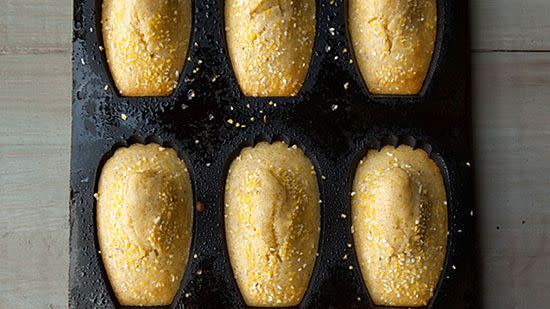5 Tips for Baking with Mochiko

Mochiko is one of those words that doesn't fare well in translation. It means "mochi flour" in Japanese, a definition helpful only to those already familiar with mochi, a type of soft and chewy rice cake. To better describe mochiko in English, most manufacturers call it sweet rice flour or glutinous rice flour instead.
Unfortunately, these names only cause confusion. Mochiko isn't sweet, nor does it contain a speck of gluten. It's entirely unlike traditional rice flour because it's made from sticky rice—the sort you have with slices of mango after a Thai meal. According to Shizuo Tsuji, the author of Japanese Cooking: A Simple Art, mochiko undergoes a unique milling process in which the sticky rice is first cooked, then dried and ground into a powder.
Once rehydrated, mochiko's chewy, sticky properties return. This glutinousbehavior makes it an ideal ingredient for gluten-free baking.
1. Because it's virtually flavorless, mochiko can be used in delicately flavored desserts (such as angel food cake or sugar cookies) that may be overwhelmed by more robust flours.
2. Use mochiko to add structure to your favorite gluten-free cakes and cookies, especially those that tend to crumble. Reduce the flour (whether all-purpose or a gluten-free blend) in the recipe by 15 percent and replace with mochiko.
3. With recipes for pie or biscuit dough, bump that number up to 25 percent to take advantage of mochiko's binding properties.
4. Too much mochiko can make cakes gummy. If at all possible, weigh mochiko with a kitchen scale. If baking by volume, you may need to convert odd cup measurements to teaspoons and tablespoons for precision.
5. You can use 100 percent mochiko to replace all-purpose flour or cornstarch when breading fried foods or preparing a roux; it doesn't have a starchy mouthfeel so it's a wonderful ingredient regardless of your dietary considerations.
Stella Parks is a Food & Wine 2012 Best New Pastry Chef. Her first cookbook, with editor Maria Guarnaschelli, is due from W. W. Norton in 2015.
Related:
